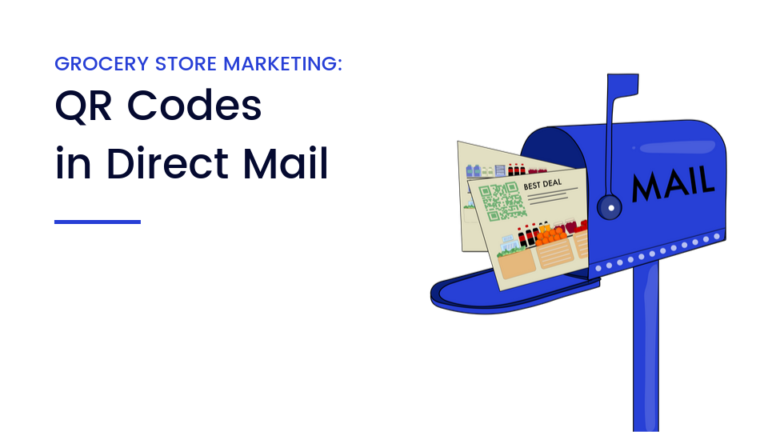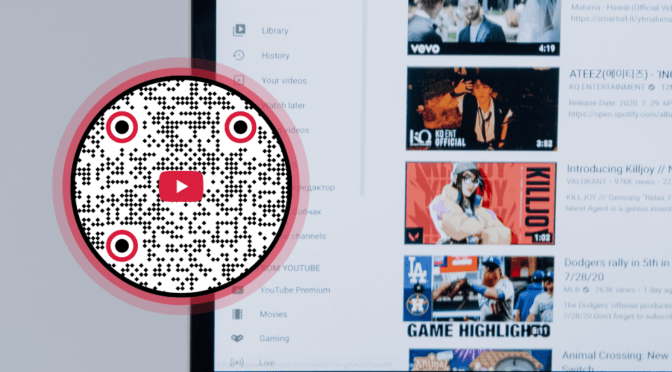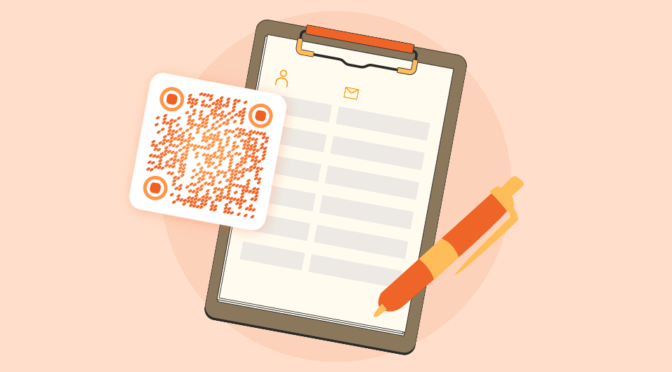Coming up with fresh promotional ideas frequently may be difficult. Especially when you run a small business like a grocery store and all traditional marketing strategies seem trite.
You look at your competitors focused on weekly discounts or printed brochures and start believing that’s everything you can do, too. And when you emulate their strategies, you potentially miss out on a truly powerful and effective marketing plan for your grocery store that could have been created instead.

Table of Contents
Kind of a vicious circle, but how do you break out of it?
First, take a step back and assess the emerging market trends that have been taking over the business within the past few decades.
40 years ago, grocery stores didn’t have to worry about the likes of Amazon Prime Now or invest in innovative marketing strategies. They had limited opportunities tied to local markets. Grocery stores lived happily ever after until the emergence of the internet and the increasing number of online businesses that promised customers quality and convenience at affordable prices.
Grocery store marketing plans, which worked before, suddenly turned out to be ineffective. Small businesses that were first to care about their online presence started to take the lead.
But is having an online presence enough?
The consumer-focused market has moved the marketing goalposts yet again. Today, only hybrid multi-channel marketing can ensure a high response rate and ensure your store promotions have a wide enough reach. Marketers need to combine several marketing strategies in order to help businesses generate new customers and nurture the existing leads.
But, you can skip all that and easily bridge offline and online marketing. Thanks to the use of QR Codes, especially coupons in a direct mail campaign, it’s much simpler than you think.
Grocery Marketing Strategies: Direct Mail Campaigns Based on Coupon QR Codes
A QR Code is typically a black and white squared symbol with encrypted data. Although, it does not have to be. You can create completely customized colorful QR Codes with your store’s logo.
It can be placed on any flat surface to provide quick access to valuable information. All the latest smartphones have the native ability to scan QR Codes through their cameras. Just point the device at a QR Code and get ready to discover what it offers.
In most cases, QR Codes provide access to websites, contact information, app stores, and other relevant resources. You can even periodically change the destination URL using a dynamic QR Code Generator to create dynamic QR Codes.
Nevertheless, downloadable discount vouchers are one of the most practical applications of QR Codes. Nothing makes a customer more excited than the opportunity to save money or benefit from a unique offer.
According to Juniper Research’s reports, digital coupon redemption will surpass $90 billion by 2022.
Coupon QR Codes are the easiest way to get vouchers and save them on a mobile device. Note that in the mobile-first epoch, such functionality is critical to meet users’ demands and expectations.
Direct mail marketing campaigns for your grocery store marketing plan
Brick-and-mortar direct mail campaigns need no introduction. Everyone has received a colorful postcard with a QR Code promoting a brand or company. Although this approach is less commonly used among grocery stores, it can become a solid foundation for your grocery store marketing plan. QR Codes will bridge the gap between offline promotional materials and online resources. Moreover, a 5.1% direct mail response rate (compared to 0.6% paid search and 0.6% email) will bring you more customers.
Related: Ultimate Guide to Direct Mail Marketing with QR Codes
Just use Uniqode’s QR Code Generator to create a unique QR Code and add it to your direct mail template.
Worried about investing way too much in direct mail marketing and still ending up with mediocre quality? Don’t be. With Inkit’s custom design templates and fully automated printing and delivery, you can entrust everything to the software.
The tool sends direct mailers to the recipients on a target list based on your data.
Read: How to choose the right QR Code generator
Apart from the higher response rate and interactivity, there are several other compelling reasons to use a QR-based direct mail campaign for grocery store promotions:
Advanced tracking capabilities for your grocery marketing strategy
Grocery stores running direct mail campaigns always have trouble estimating direct mail ROI and effectiveness. With the appearance of QR Codes, this problem has disappeared. Once recipients on your mailing list scan the direct mail, you receive data on their location, device type, operating system, browser, and scan time. In addition, you can connect your direct mail campaign with Google Analytics. This way you can also analyze the age, gender, and interests of people who scan the codes. Such detailed information on your target audiences and progress is extremely useful to finetune your grocery store marketing plan.
Have an edge over competitors with a QR-based grocery store marketing plan
Many grocery stores still don’t add QR functionality to their leaflets, brochures, and other direct mail. This gives you a great chance to become a leader in your local market thanks to innovative solutions. For better results, make sure to encourage people to scan the QR Codes. A grocery store marketing plan example is using QR Codes to provide discounts, offer vouchers, or share access to app stores with applications for online delivery. According to estimations, by 2022, 1 billion mobile devices will scan QR Codes to access coupons. Benefit from this trend while other companies neglect the power of a QR-based direct mail campaign.
Seamless consumer experiences using QR Codes in your grocery marketing strategy
The use of QR Codes will significantly speed up almost everything your customers have done before. They will no longer need to manually type your web address in Google Search, dial your number, or search your store on Google Maps. You can even offer customers to order online, directing them to the Products section once they complete scanning.
With all this information at hand, you are well on your way to creating your grocery store marketing plan.
How to Create a Grocery Store Marketing Plan
Step #1. Study your target audience
Although grocery stores are a traditional form of small business, your target audience can be very diverse. Make sure to analyze your area and other relevant aspects to create a customer persona. It’s crucial to understand who is more likely to visit your grocery store and has the highest purchase potential.
Single membered families have completely different needs than nuclear families or wholesale customers such as hotels or corporations. Take into account a range of demographic factors, including age, gender, buying patterns, preferences, social status, and other details. Put yourself into the shoes of your customers and try to understand what promotional ideas they would like best.
For instance, according to recent statistics, good loyalty programs can make more than 70% of consumers recommend your brand. 72% of adult Americans participate in at least one loyalty program, whereas 69% noted the critical importance of customer service. Although these general trends reflect the overall market situation, you need to find out what your potential customers think.
Step #2. Analyze your competition’s grocery marketing strategies
Though you may perceive other grocery stores as the greatest threat to your business, they can actually benefit you. Once you study your target audience, it’s time to turn your attention to the competitors in your niche. These businesses have already implemented diverse grocery store promotions, so now you can learn from their mistakes.
To see how others target their customers, you should become one of them.
Go to your competitor’s store, look at their website, printed ads, and other promotional materials. Subscribe to their email newsletter, if they have one, or start following their social media. Try to see what tools they use to build brand awareness and promote their products. Think about whether they used any grocery store promotional ideas to encourage you to make a purchase and become a loyal customer.
Find inspiration from existing practices and weed out ineffective strategies that do not work. This will help you avoid less obvious marketing pitfalls you could otherwise make.
Step #3. Find what makes you unique – USP
After the detailed competitor analysis, you should already have a clear picture of the local market. Now choose one or several of your distinguishing features and build a grocery store marketing plan around them. Maybe you do something that nobody else around you does, like sell organically grown food. Supplement this decisive factor with product quality, active marketing, and decent customer service to outpace other grocery stores.
Step #4. Define several grocery marketing channels that can work for you
Based on the recent statistics, multichannel buyers spend 300% more than the buyers targeted through one channel. Besides, 87% of retailers admit that multichannel marketing is critical to their success. That’s why a solid grocery store marketing plan must unite several strategies around a single concept.
Don’t forget to estimate your budget to pick optimum grocery store marketing ideas before creating the final plan. Make sure the selected approaches complement each other providing a seamless customer experience. Ideally, you should connect your online and offline advertising to increase the efficiency of both and increase the number of potential customers. The use of QR Codes in a direct mail campaign is probably the easiest way to do this.
In case you are inspired to add QR Codes to your mail pieces, combine Uniqode’s QR Code solution and Inkit’s direct mail automation. Uniqode is the perfect solution to generate QR Codes for digital vouchers or direct mail analytics, while Inkit will make your direct mail campaign highly effective thanks to CRM integration and automatic delivery.
Want to check out our super simple direct mail software yourself? Learn more and set up your account here: https://www.inkit.com











